This is the second article on dual-booting Windows 7 and Ubuntu 10.10 on a computer with one hard disk. The first, how to dual-boot Ubuntu 10.10 and Windows 7, showed how to accomplish the task with GRUB 2, the boot loader used by Ubuntu, installed on the Master Boot Record (MBR) of the hard disk. That is, GRUB is responsible for the dual-booting task. The problem with that configuration is that GRUB files tend to be overwritten when you upgrade Windows. To get around that problem, the recommended method is to install GRUB not on the MBR, but on the boot partition of Ubuntu.
That is the purpose of this tutorial. To show how to dual-boot Windows 7 and Ubuntu 10.10 where the Windows Boot Manager is responsible for dual-booting both Operating systems.
Note that this tutorial assumes installation on a computer with an existing installation of Windows 7. Here are the tasks involved:
- Download Ubuntu – Ubuntu 10.10 Desktop edition is used for this tutorial
- Install Ubuntu – the key point at this step is to remember to install GRUB in the boot partition
- After installation, boot into Windows and download and install EasyBCD. Use EasyBCD to add an entry for Ubuntu in the Windows boot menu
The result is shown below. Any time you reboot the computer, the Windows boot menu will give you the option to boot into either Windows 7 or Ubuntu 10.10. Note that with this configuration, you will still have access to the GRUB menu, if you decide to boot into Ubuntu.
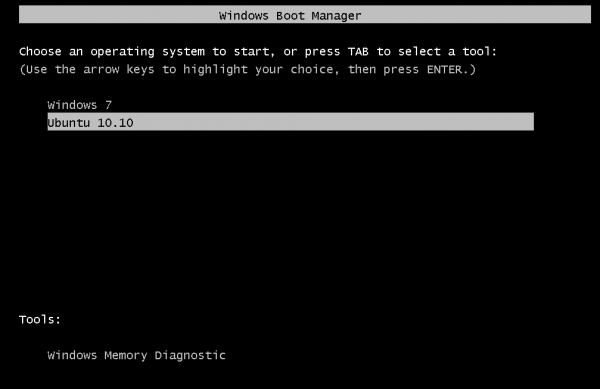
Now, lets start. To reduce the number of images used, the tutorial begins at the disk partitioning step. You have three options. The first might seem like the best option, but if you select that, you will have no say on where GRUB is installed. The installer will actually install GRUB in the MBR, overwriting the Windows boot files. The second option is obviously out of the question. That leaves the last option, and that is the option you want to select. So, select it and click Forward.
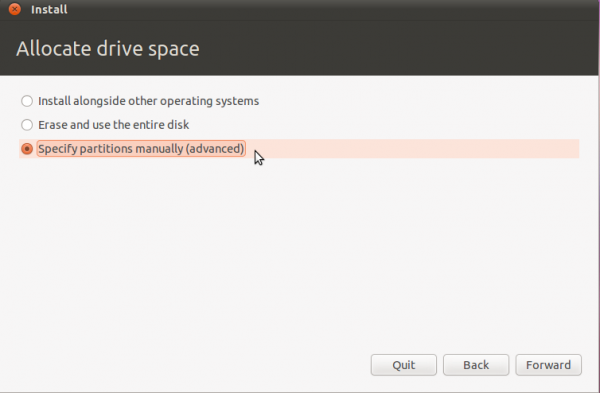
The images used in this tutorial were obtained from a test installation in a virtual environment with about 100 GB of disk space. The default partitions created by Windows are shown below. The first, /dev/sda1, is the system partition. The second, /dev/sda2, is the data partition. To install Ubuntu, we are going to resize this data partition, and install Ubuntu in the reclaimed space. How much space can we reclaim? It depends on the amount of space used by Windows (the last column in the image gives you that figure). For this installation, you can see that I can reclaim a sizable chunk of the space left. To resize the partition, select it and click the Change button.
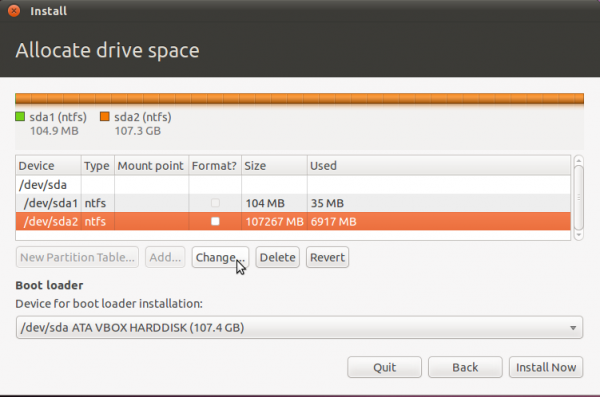
For this tutorial, I am going to reduce the partition’s size by about 56 GB. The remaining space should be more than enough for Windows 7. By how much you reduce your own partition will, of course, depend on the size of the disk you are working with.
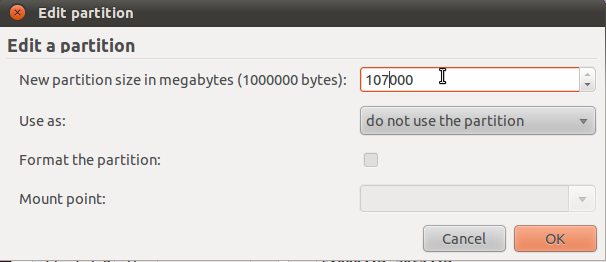
This is the final cut. Note that the size is the only thing you change. Do not change any other thing or you will likely hose your Windows installation. OK.
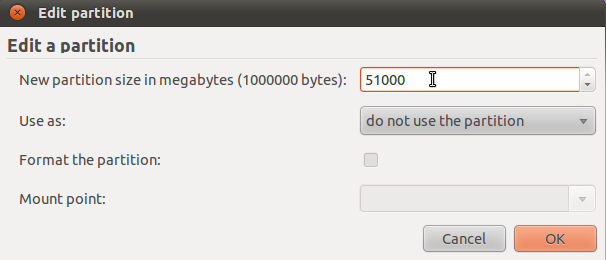
This is just a friendly warning. Continue.
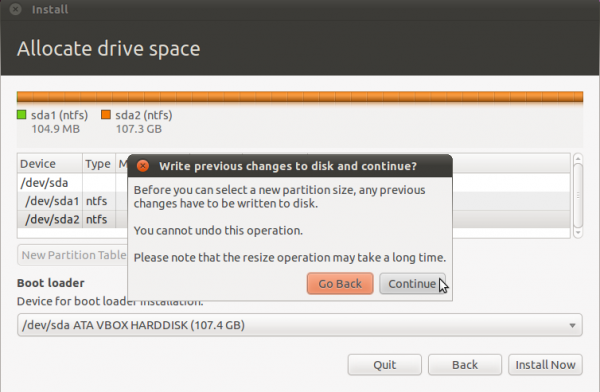
With the free space reclaimed from the Windows partition, now you can start creating partitions for Ubuntu. Select the free space as shown and click Add. Note that you will have to repeat this step for all the partitions you will be creating.
For this tutorial, four partitions will be created. These will be used for /boot, /, swap, and /home file system directories. You can create as many partitions as you need, but for a typical desktop, these will be sufficient.
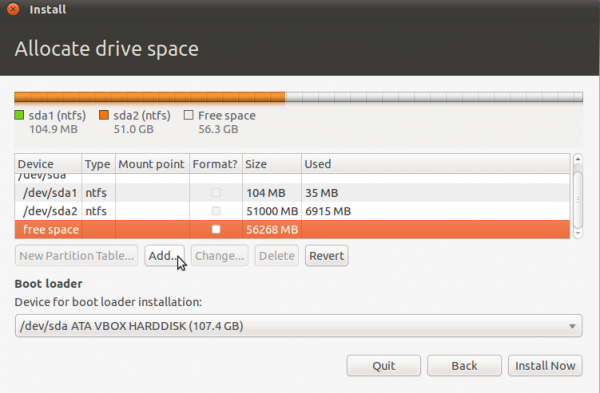



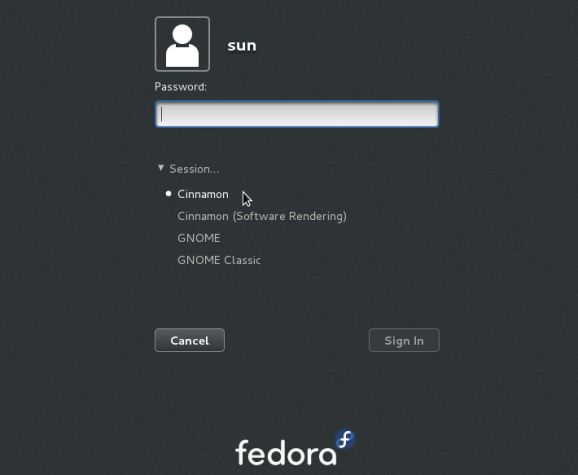
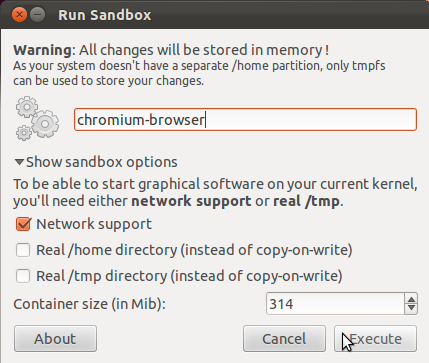
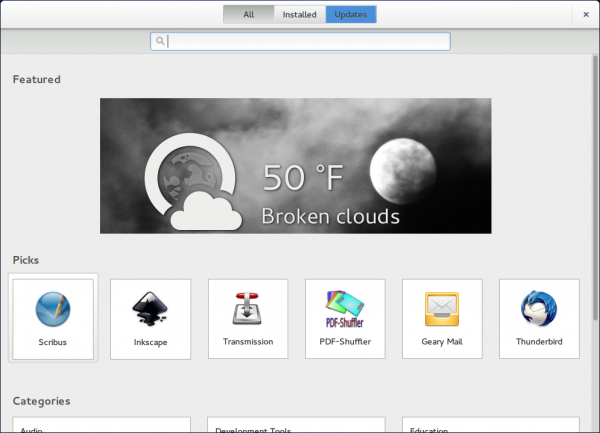


After editing the partition, i dont get any “Free space” partition. But i get Unusable under “Device” column. When i select unusable, i cannot create any partitions for Ubunutu. Any idea why i dont see “Free Space” but i see “Unusable?
Any responses are appreciated.
That likely means that you have 4 primary partitions. The system will not allow you to create more than 4 primary partitions. You need to delete one, and recreate it as an extended partition. Then the unusable space will become usable.
Hey Man,
Back in February, I left the second comment on this excellent guide, and it seems like its popularity has been gaining momentum since then.
I ran into a small problem recently:
Got some additional RAM, and my workstation began to crash in an arbitrary manner, when it used to be airtight and ironclad.
Used memtest86+ on the Grub2 boot-loader to determine which RAM sticks were causing the problem, and after I hard reset the machine a couple of times, the Ubuntu boot menu stopped working the way it used to.
Found the bad sticks, and took them out, my machine is Mr. Dependable again, but with 4 instead on 8 gigs RAM.
Now this happens when I choose Ubuntu 11.04 from the Windows boot-loader menu:
Try (hd0,0): NTFS5 No Ang0
…. a minute or two later Grub2 pops up and everything looks normal.
The partition layout appears to be the same, so:
What happened?
Where is the problem located?
How do I get it back to normal?
Thank you, and all the very best,
JohnPaul Adamovsky
Swap area should be equal to twice the installed RAM.
In this guide it is simply mentioned as 2GB.
For 8GB RAM re-partition the swap area to 16GB and see if that works.
Very nice walkthrough over dual booting windows 7 and ubuntu. Much better than the ubuntu documentation itself.